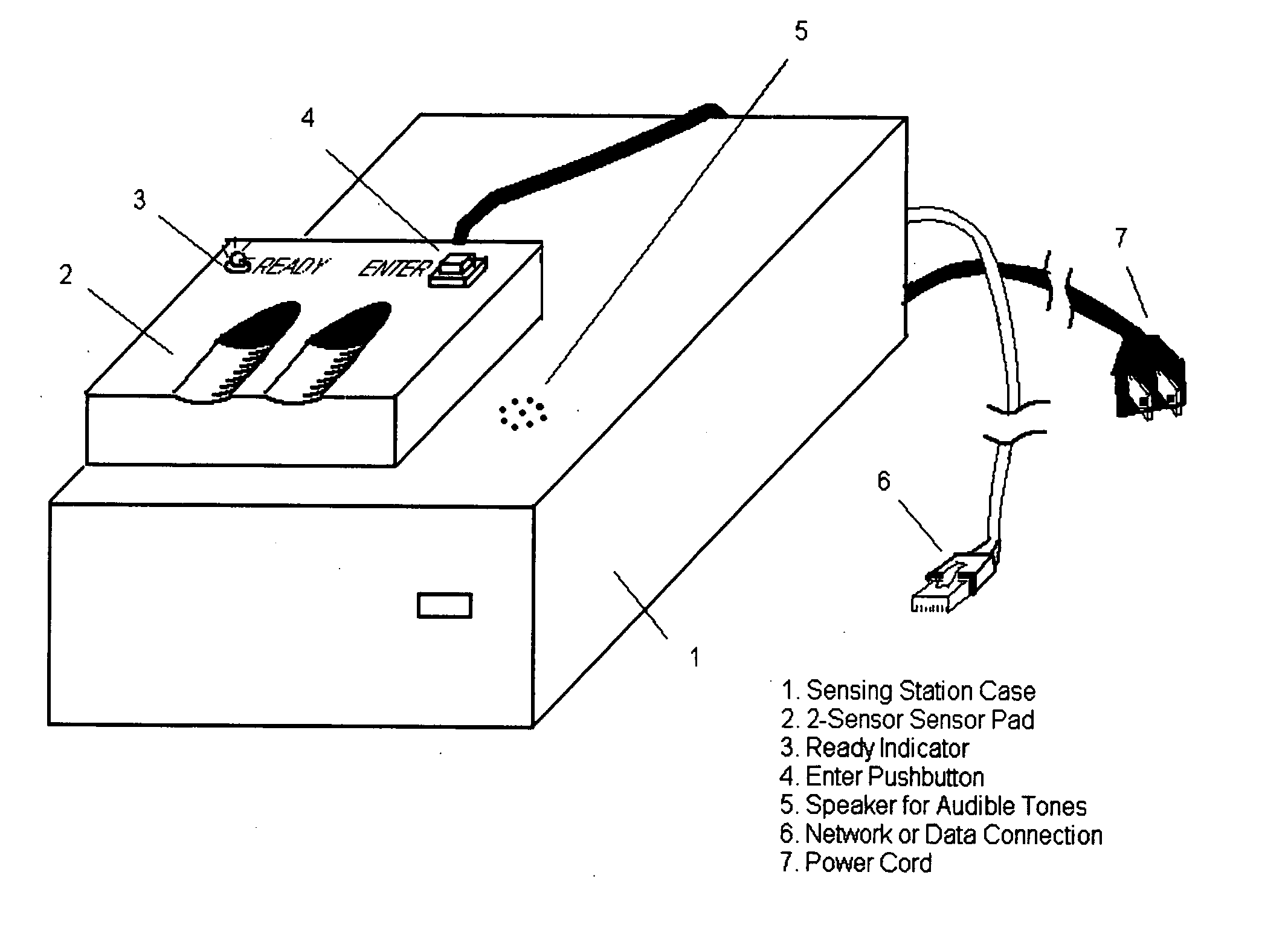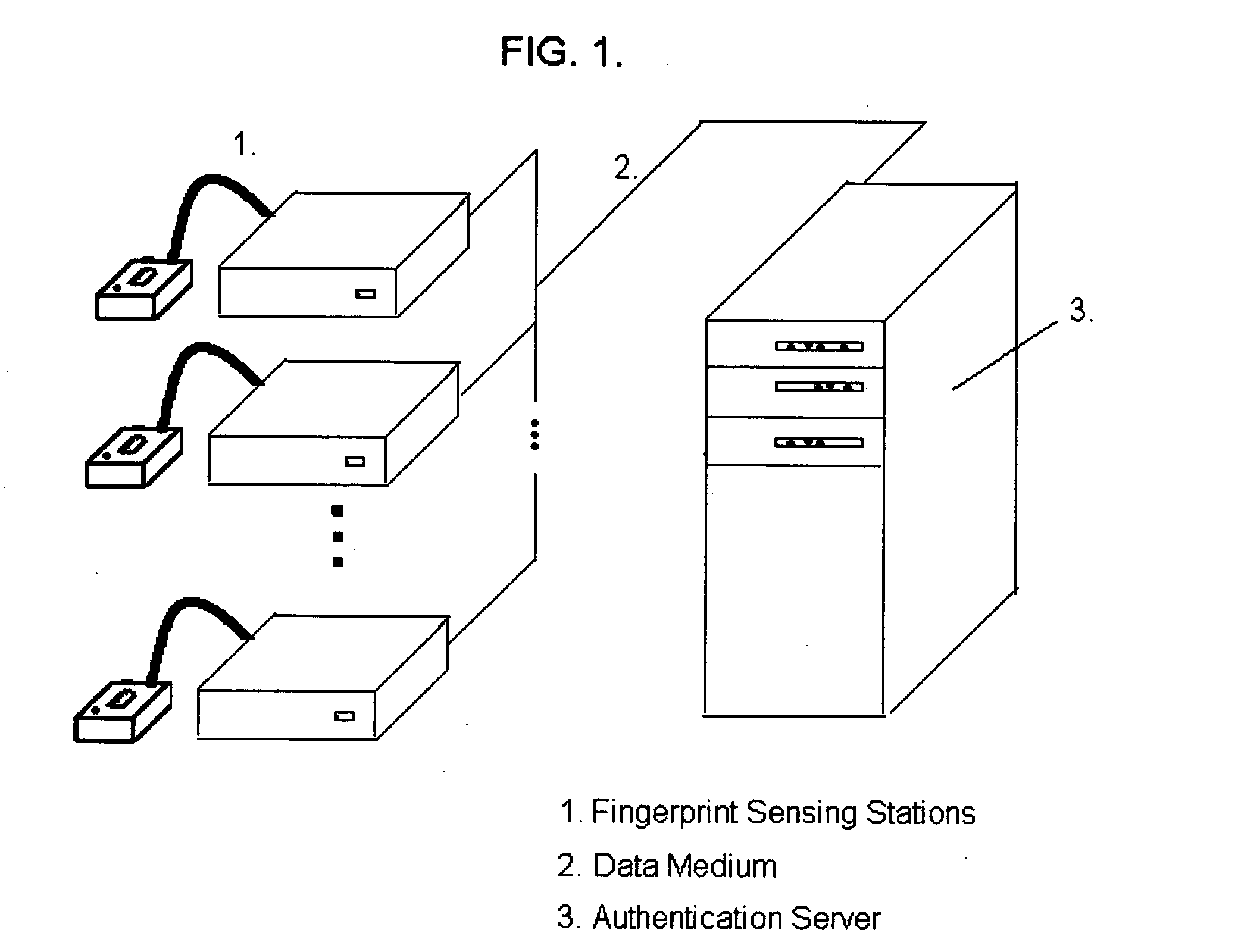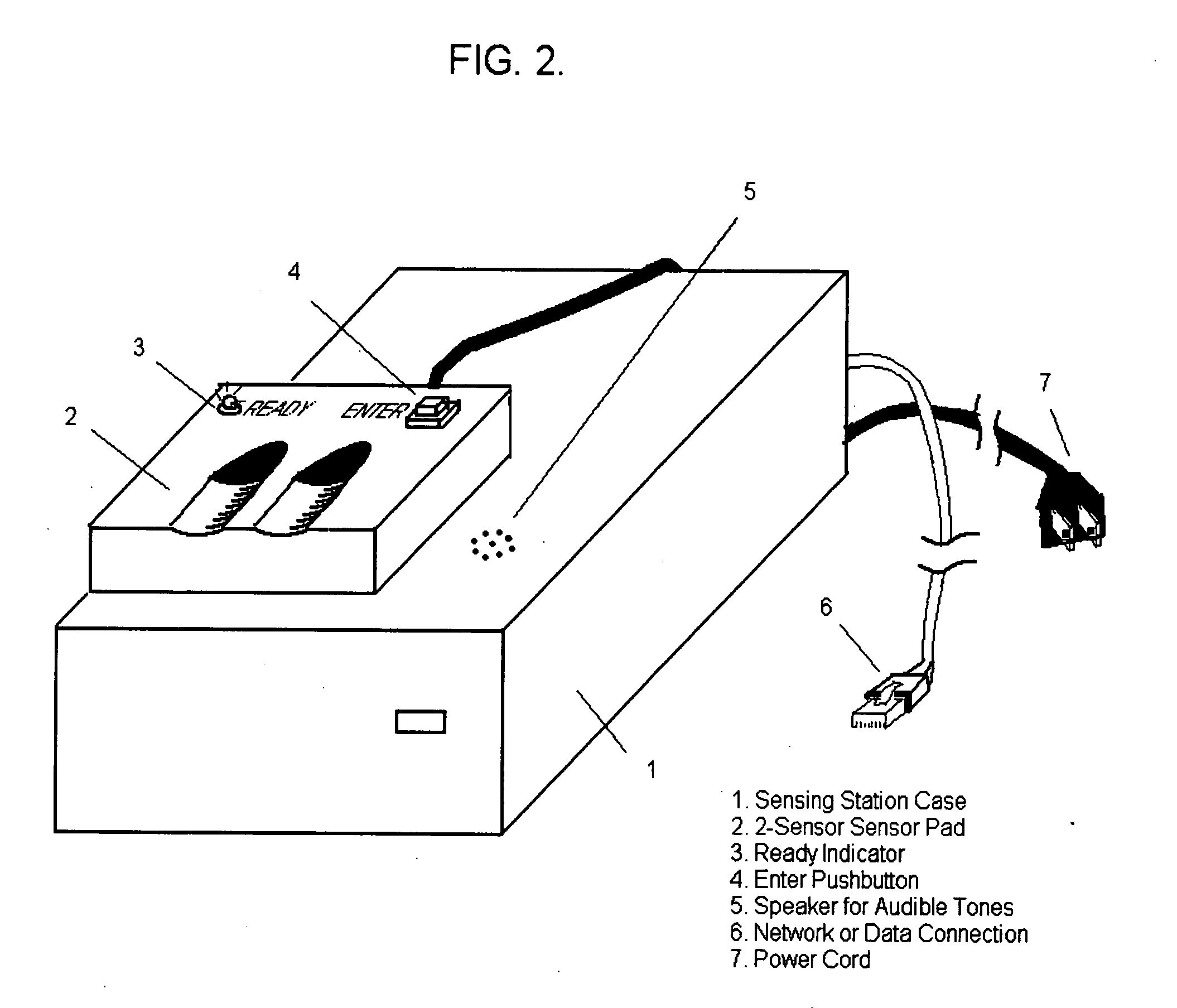Technique using order and timing for enhancing fingerprint authentication system effectiveness
a fingerprint authentication and order technology, applied in the direction of testing/monitoring control systems, instruments, program control, etc., can solve the problems of reducing reliability of optical and capacitive scanning technologies, preventing the use of basic and low-cost fingerprint scanning technologies, and new techniques that do not offer significant security against replay attacks. , to achieve the effect of increasing the number of theoretically possible authentication sequences, increasing the number of fingerprint sensors, and affecting the number of potential authentication sequences
- Summary
- Abstract
- Description
- Claims
- Application Information
AI Technical Summary
Benefits of technology
Problems solved by technology
Method used
Image
Examples
Embodiment Construction
[0031] The active behavior enhanced fingerprint authentication system can be implemented in a manner that is sensitive to finger and / or sensor order and timing or sensitive to finger and sensor order only, or sensitive only to finger order. For the sake of generality, a system based upon finger order and timing will serve as the basis of our description. While many variations exist with respect to how the new method could be implemented, we present only one recommended approach here. For the sake of simplicity, we assume the case where only one sensor is used. The case where more than one sensor is can be analyzed based upon a simple extension of the discussion presented here.
[0032] The active behavior enhanced fingerprint authentication system can be implemented with existing fingerprint reading hardware and with relatively minor modifications to existing software. Time sensitive instantiations of the new method will require that an electronic timer be incorporated into the sensin...
PUM
 Login to View More
Login to View More Abstract
Description
Claims
Application Information
 Login to View More
Login to View More - R&D
- Intellectual Property
- Life Sciences
- Materials
- Tech Scout
- Unparalleled Data Quality
- Higher Quality Content
- 60% Fewer Hallucinations
Browse by: Latest US Patents, China's latest patents, Technical Efficacy Thesaurus, Application Domain, Technology Topic, Popular Technical Reports.
© 2025 PatSnap. All rights reserved.Legal|Privacy policy|Modern Slavery Act Transparency Statement|Sitemap|About US| Contact US: help@patsnap.com



